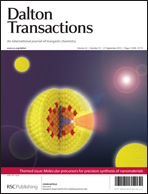Probing the origin of in situ generated nanoparticles as sustainable oxidation catalysts†
Abstract
A novel method for the in situ generation of catalytically active small metal

- This article is part of the themed collection: Molecular precursors for precision synthesis of nanomaterials

 Please wait while we load your content...
Please wait while we load your content...